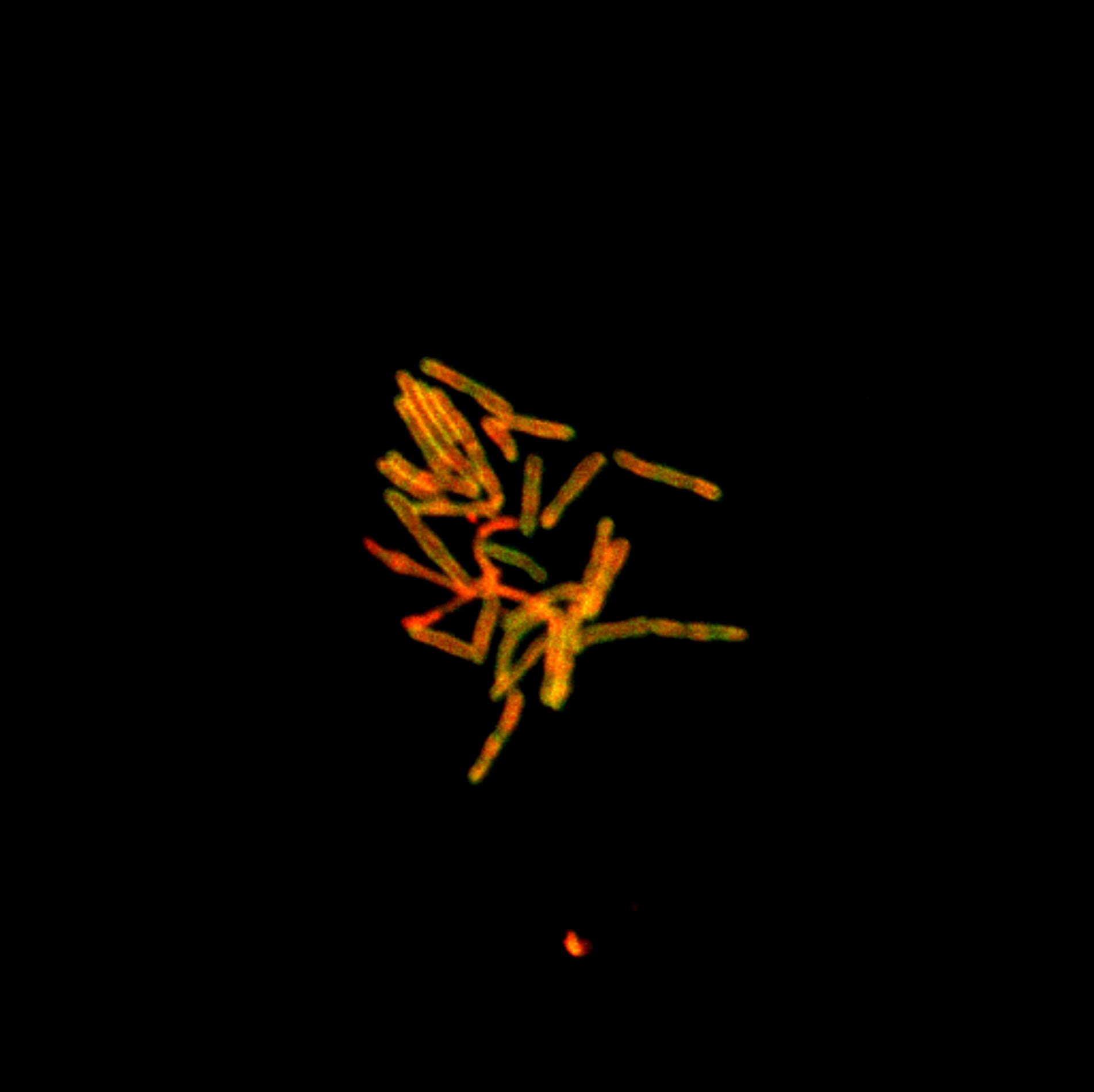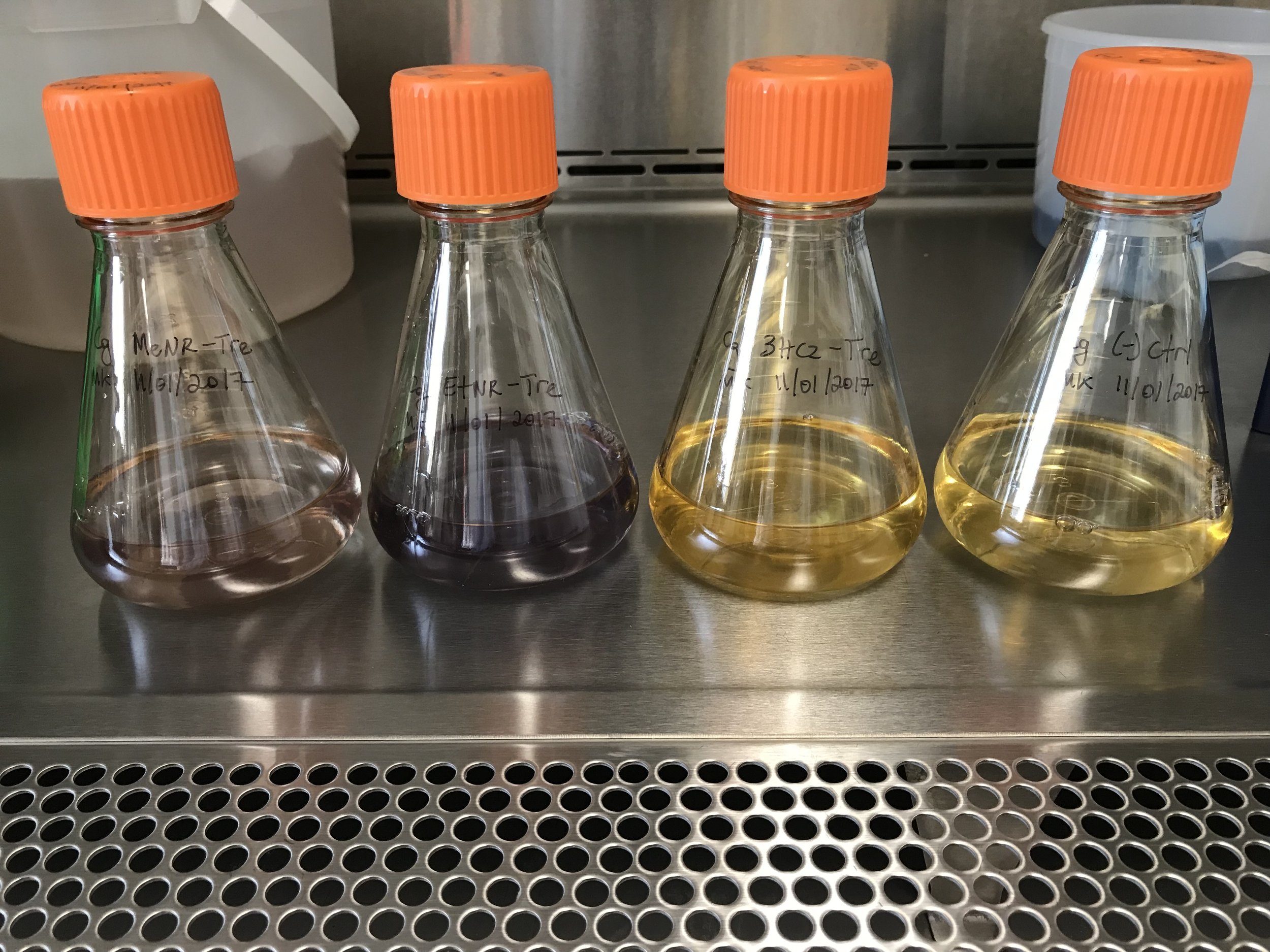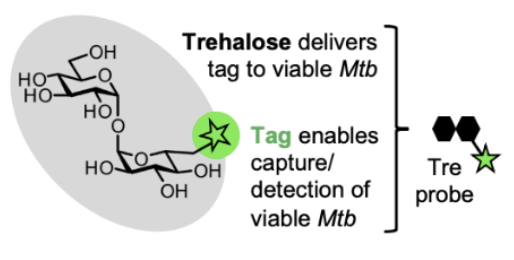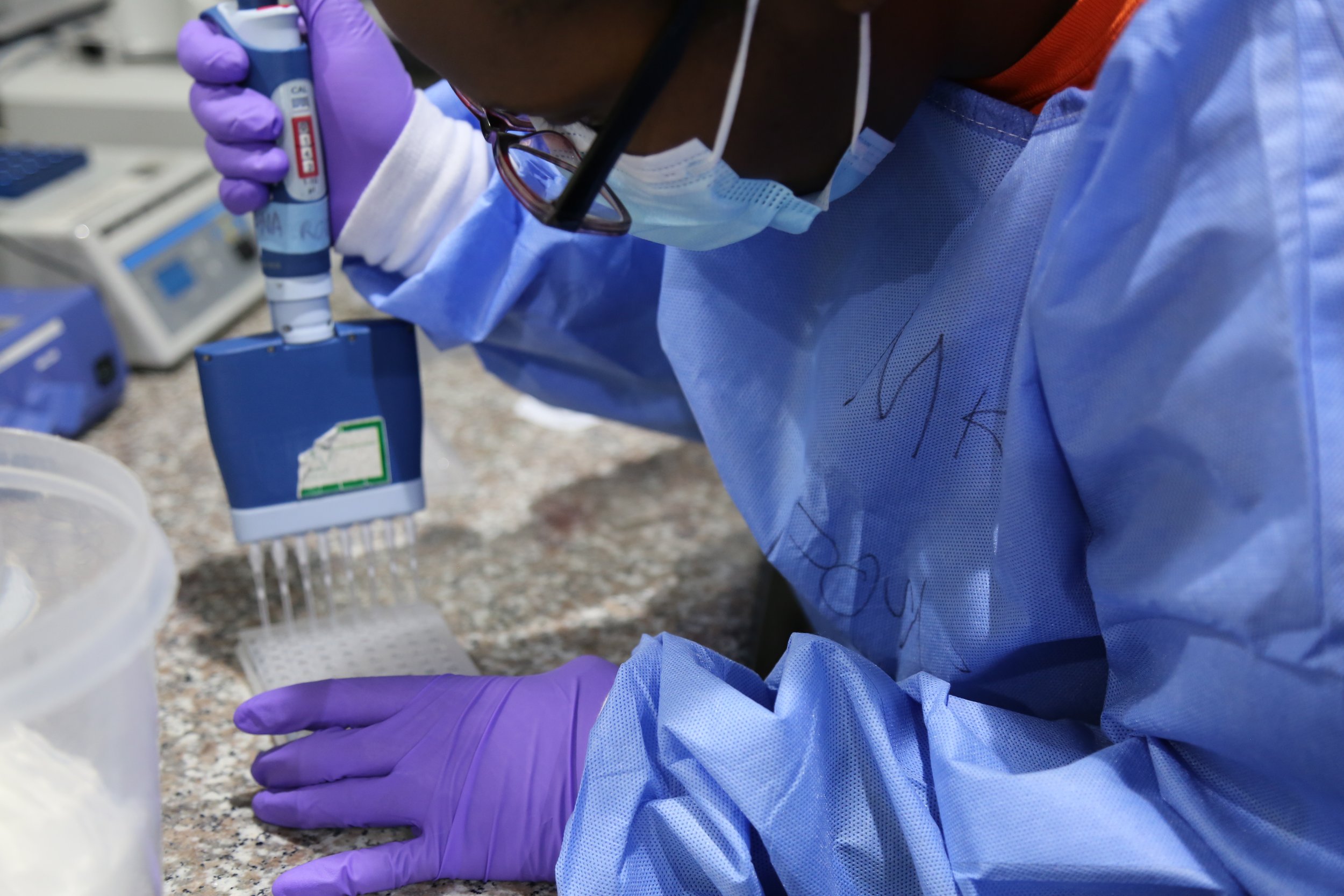
Our Research
Bioengineering molecular assays for infectious disease diagnostics
Our Research Program
The Kamariza lab utilizes new frontiers in carbohydrate and nucleic acid chemistry to design biosensors for the study of microbial processes and to engineer versatile, easily implementable toolkits for the detection, study, and treatment of infectious agents. Specifically, our research focuses on bacteria and parasites, including:
Investigating glycoconjugate biomarkers for pathogen drug-susceptibility testing
Developing predictable approaches to selectively detect pathogenic 3D structures
Designing and evaluating CRISPR-based systems to probe and study microbial infections
Ultimately, we aim to leverage modern understanding of molecular concepts to innovate, develop, and deliver modern technologies to advance human health.
Trehalose-based solvatochromic probes to detect drug resistant TB.
Tuberculosis (TB) is second only to COVID-19 as the most lethal cause of death from a single infectious agent. With around 25% of all deaths caused by antimicrobial resistance worldwide attributed to drug resistant TB, it remains a public health crisis. To exacerbate this, the COVID-19 pandemic has reversed years of progress in the fight against TB, with reports suggesting rapid detection of DR-TB (essential for life-saving measures) and subsequent treatment have been severely impacted. A critical component to controlling DR-TB is early detection of TB and accurate detection of drug resistance.
A rational and predictable approach to selectively detect pathogenic biomolecular structures.
The advent of nucleic acid molecular technologies in the late 20th century revolutionized diagnostic capabilities but have not translated well at POC due to their high costs, infrastructure requirements, and the need for highly skilled technicians. In contrast, molecular imaging tools remain an attractive option for POC diagnostics because of the platforms’ affordability, versatility, and technical simplicity.
All pathogens have abundant and unique RNAs with discrete sequences and tertiary structures (i.e., loops, hairpins, etc.) that, in principle, can be targeted with fluorogenic probes. Indeed, small molecules can be designed to undergo fluorescence enhancement upon RNA binding. A famous example is Spinach, an RNA aptamer that binds and turns on fluorescence of DFHBI, a fluorophore like green fluorescent protein. Using malaria as a disease model, we perform data-driven engineering of molecular systems to capture pathogenic RNA motifs, enabling background-free, amplification-free, real-time imaging of abundant RNAs and simultaneously providing rich information with high spatial and temporal resolution. As well, we employ transcriptomic analysis tools to probe cellular unique RNA function and dynamic movements, enabling selective microbial identification without the need for organism isolation or nucleic acid purification and amplification. Given the wide-ranging functions structured RNAs play in metabolic processes, this research may enable breakthroughs in mapping the complete 3D RNA landscape of pathogenic organisms, understanding RNA function and evolution in microbes, uncovering species-specific signatures (or mechanisms), and offering new fluorogenic labeling chemistries.
CRISPR-based diagnostics against bacteria and parasites
While advantageous for POC detection, amplification-free diagnostic technologies often have lower sensitivity values when compared to amplification-based detection methods. We use CRISPR-Cas13 systems to engineer highly sensitive diagnostic assays and enable highly multiplexed detection of infectious pathogens. Because of its scalable and modular capability, CRISPR-Cas13 is an attractive approach to detecting multiple pathogenic strains and their variants with high selectivity and sensitivity. Importantly, we aim to design assays that can differentiate drug susceptible and drug resistant species in a single experiment. We hope to use these assays to monitor infection transmission at a grand scale and improve our understanding of disease course and outcome in resource-limited settings.





